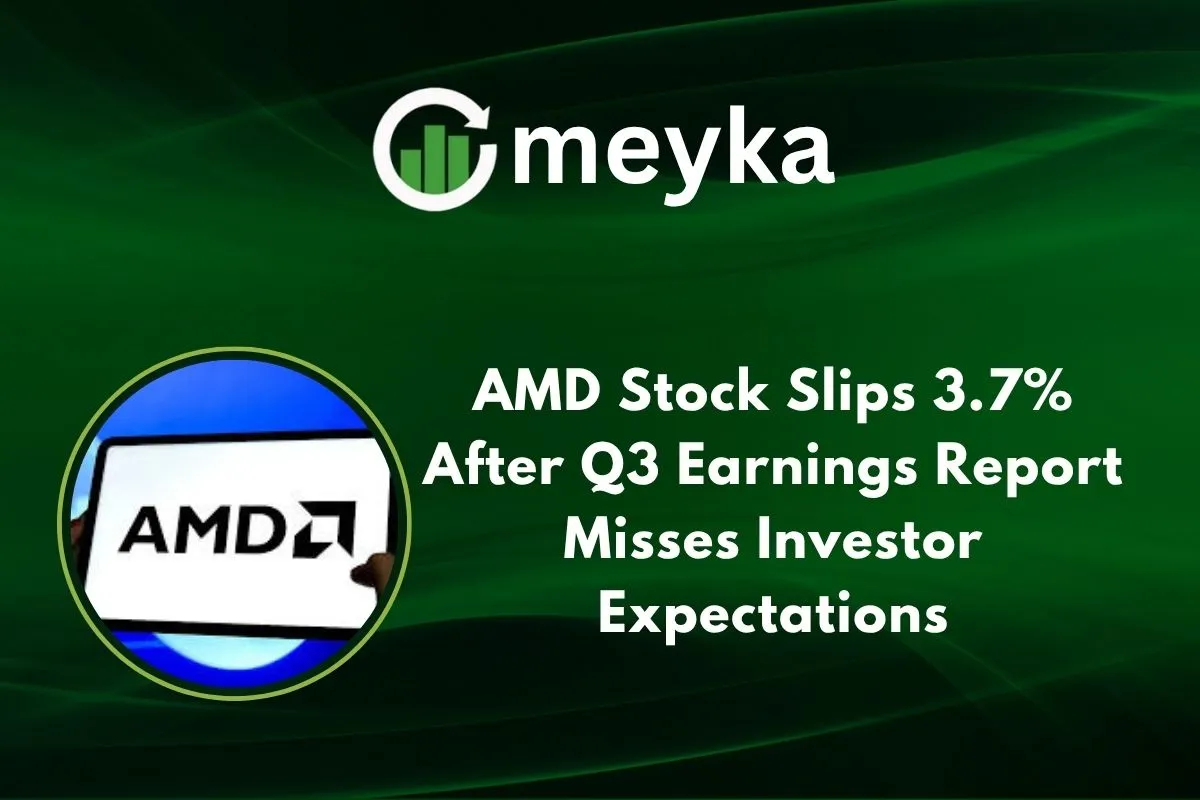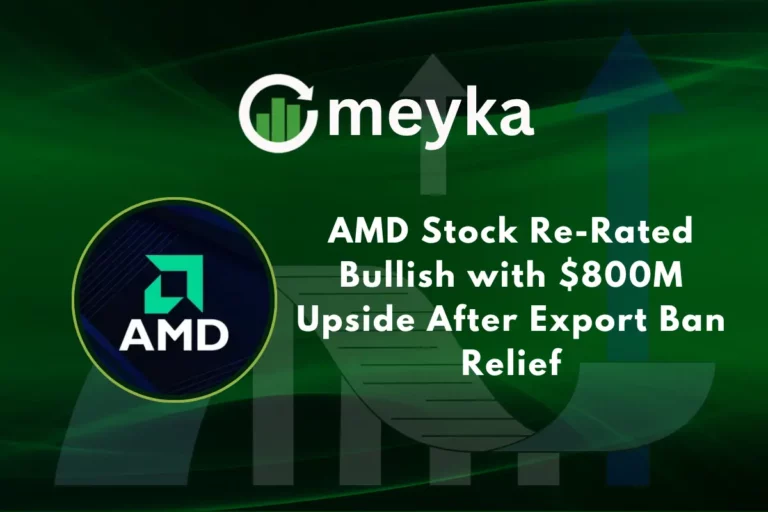AMD Stock Slips 3.7% After Q3 Earnings Report Misses Investor Expectations
We saw AMD shares drop about 3.7 % after the Q3 earnings report. The headline feels odd: the company beat on revenue and profit, yet the stock fell. We’re left asking: what’s really going on with AMD stock? The reaction shows that the story isn’t just about numbers, it’s about expectations, timing, and growth paths.
AMD Q3 Earnings Snapshot
In the third quarter of 2025, AMD posted record revenue of around US $9.25 billion, up about 36 % year-over-year. On a non-GAAP basis, earnings per share (EPS) came in at about US $1.20, beating what analysts forecast. The gross margin held at roughly 54 % non-GAAP, showing healthy profitability. AMD also raised its guidance for Q4, projecting revenue around US$9.66 billion. So on the surface, the company had a strong quarter.
Segment Performance Breakdown
- Data Center: Revenue reached about US $4.3 billion, up ~22 % from last year.
- Client & Gaming (desktop, laptop, gaming GPUs): Combined revenue hit roughly US $4 billion, up a robust ~73 % year-over-year.
- Embedded business: Revenue fell to about US $857 million, down 8 % year-over-year.
So we see strong growth in many areas, but the embedded business shows weakness.
Why AMD Missed Expectations
Even though AMD beat on top-line and EPS, we must ask: why then did the stock fall 3.7 %? There are a few reasons:
- The market had already priced in a very high growth rate and full enthusiasm around AI and data-center momentum. When the embedded segment dropped and some parts of the business didn’t accelerate as much, some investors took offense.
- Some concern about timing: large deals, ramp-up of next-gen AI products (like MI450), and major infrastructure deals are still ahead. Investors dislike uncertainty.
- Valuation pressure: AMD shares had already risen strongly this year. That leaves little margin for surprise. For example, the stock is up over 100 % year-to-date.
- The embedded drop and slower-than-ideal ramp in the highest margin data-center growth may have raised questions about sustainability.
Stock Reaction & Market Sentiment
When AMD announced the results, shares slipped ~3.7 % to around US $250.05 at close.
In after-hours trading, they slipped further. Analysts pointed out that despite strong performance, investors are cautious given the lofty growth expectations.
In short, the market expected “more” or faster, not just the beat.
AMD in the AI Chip Race
We should look ahead at how AMD is positioning itself for the future.
- AMD has landed major partnerships: for example, a deal to supply up to 6 gigawatts of GPUs to OpenAI.
- The next-gen MI450 GPU and “Helios” rack-scale system are scheduled for 2026.
- AMD is closing the gap with rivals such as Nvidia in AI/data-center compute.
Yet the ramp-up of such high-end AI products takes time, and until they contribute meaningfully to revenue, the market remains modestly cautious.
Forward-Looking Guidance
Management for Q4 sees revenue around US$9.39.9 billion, above many analyst estimates. Gross margin is expected to remain roughly in the low-mid 50’s (percent). Key focus areas: expanding data-center AI business, scaling client/gaming segments, leveraging partnerships,, nd new chip architectures. Risks remain: execution of next-gen product lines, global supply chain issues, and macro factors like inflation, consumer demand. So while the outlook is positive, the “path” to growth carries some bumps.
Analyst Views & Valuation
Analysts overall remain positive but somewhat cautious. Many have maintained Buy or Outperform ratings but flagged that much of the favourable scenario is already priced in. AMD’s valuation is high relative to earnings, and investors expect significant growth. The risk: if growth slows, the stock may fall more. In sector comparisons, AMD is often measured against Nvidia and Intel. While AMD has gained share in certain segments (e.g., client/gaming CPUs), Intel still holds major scale in servers/mobility.
Conclusion
We are witnessing a strong company executing well: record revenue, solid margins, and major AI-infrastructure deals. But the market reaction shows that execution timing and future growth assumptions matter just as much as results. AMD’s stock 3.7 % drop signals that investors want both growth now and a credible ramp-up ahead. For long-term investors, AMD remains an interesting play in AI and compute infrastructure. For short-term traders, the valuation and execution risks mean caution is warranted. The next few quarters, especially the rollout of MI450 and rack-scale systems, could be the real litmus test.
FAQS
AMD is selling off because investors expected higher growth and were disappointed by slower segments and mixed guidance.
AMD may be a good buy if you believe in its long-term AI and data-center bets. But it has risks and needs patience.
AMD has potential, but growing as fast as Nvidia is unlikely soon. Nvidia leads the AI chip market by a wide margin.
Disclaimer:
The content shared by Meyka AI PTY LTD is solely for research and informational purposes. Meyka is not a financial advisory service, and the information provided should not be considered investment or trading advice.






